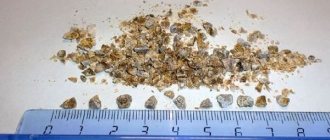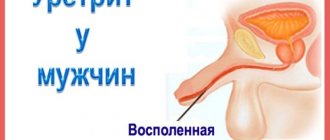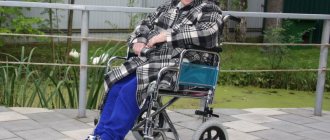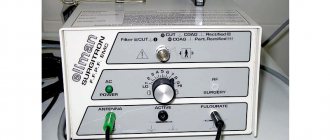Migraine is a type of headache characterized by repeated intense attacks. In addition, migraine is accompanied by a combination of various neurological, autonomic and gastrointestinal symptoms. According to statistics, the disease ranks 6th among diseases leading to a decrease in quality of life.
Migraine attacks are most often diagnosed in women. The onset of the disease occurs at the age of 10-20 years. The maximum number of attacks is reached by 30-45 years.
Causes of migraine
The exact causes of migraine symptoms have not yet been studied. The main role is played by hereditary burden. There are provoking factors, the presence of which contributes to the appearance of migraine headaches. These include:
- emotional stress;
- menses;
- hunger;
- insomnia;
- weather change;
- excessive sleep;
- food products (chocolate, citrus fruits, bananas, fatty cheeses);
- alcohol.
Stages of migraine and their symptoms
An attack of hemicrania includes four stages, each of which has its own symptoms. The order of stages for each attack may be different.
1. Prodromal (prodrome) stage.
According to a number of studies, the estimated number of migraine sufferers is up to 38% of the entire planet's population. The prodromal stage occurs in only half of this number of people. They are depressed, irritable, or, conversely, full of strength and energy several hours or days before the onset of a headache. Some patients anticipate the exact timing of an attack of hemicrania.
2. Aura.
Aura is a set of symptoms of neurological diseases that foreshadow the onset of hemicrania or occur at the very beginning. It does not always recur during an attack of cephalalgia, lasting from 10 to 30 minutes. It manifests itself primarily as visual symptoms, but many patients also experience symptoms in the extremities (starting in the fingers of one hand with tingling/numbness/weakness and continuing to spread throughout the entire hand). One of the symptoms of this stage is difficulty in finding the right words.
3. Headache.
It is localized mainly on the side of the temple or in the forehead area and lasts up to 2-3 days. The pain is very strong, pulsating in nature and intensifies with movement. Sometimes accompanied by nausea and vomiting triggered by irritants such as certain odors, light or noise.
4. Stage of resolution of hemicrania.
Once the headache ends, the feeling of weakness and fatigue may return. Full recovery will occur within a day.
Migraine classification
ICD-10 identifies the following forms of migraine:
- without aura;
- with an aura;
- chronic.
In addition, migraine can have a complicated course and be regarded as an episodic syndrome.
Migraine without aura
It is regarded as a simple form of the disease. Accompanied by recurring headache and typical associated symptoms.
Migraine with aura
An aura is a cerebral symptom that occurs shortly before a headache occurs. The following subtypes of migraine with aura are distinguished:
- with a typical aura - expressed by sensitive, visual, speech disturbances. The duration of this form of the disease is 1 hour;
- with brainstem aura – characterized by dizziness, tinnitus, impaired consciousness, dysarthria, diplopia, ataxia. There is no muscle weakness;
- hemiplegic – accompanied by reversible muscle weakness and symptoms characteristic of simple migraine;
- retinal – characterized by darkening of the eyes, flickering stripes or spots.
Chronic migraine
In chronic migraine, headaches occur daily or almost daily. The diagnosis is made when signs of the disease are present for more than 2 weeks per month for 3-4 months. Chronic migraine can occur with or without an aura.
Migraine during pregnancy
Predisposition to the development of migraines during pregnancy is associated with hormonal changes. It occurs both with an aura and without previous signals. Attacks are accompanied by nausea, less often vomiting, sensitivity to external stimuli (light, loud sounds, noises, smells).
Seizures without aura tend to decrease in frequency and duration as labor approaches.
Migraine with aura is characterized by a stable course. Against the background of the disease, blood circulation in the placenta may deteriorate. In rare cases, headaches provoke the development of fetal brain hypoxia. Attacks deplete the expectant mother’s body, which necessitates treatment. When contacting certified medical centers with experienced specialists, treatment is successful.
By the second trimester, positive dynamics are observed - the intensity and duration of paroxysms decreases. By the third trimester, there is an improvement in well-being in 50-80% of cases.
Migraine stages
Migraine attacks occur in several stages. Among them:
- Prodrome. In other words, harbingers of headaches. The occurrence of these symptoms is observed in 50% of patients suffering from migraine. Pathological signs include irritability, emotional lability, weakness, thirst, swelling, muscle tension in the neck and back of the head. These symptoms may occur several hours or days before the attack.
- Migraine aura. This is a set of neurological symptoms that occur immediately before a migraine attack. In accordance with this, violations are distinguished:
- visual (flashes or colored lines, loss of areas of vision;
- motor;
- sensitive (numbness, tingling);
- speech.
The intensity of the listed migraine symptoms gradually increases. The duration of a migraine aura can be 1 hour.
- Stage of headache. Signs of a migraine are an intense headache that appears on one side (less often bilateral). Its severity increases even with moderate physical activity. A migraine attack is accompanied by nausea, vomiting, and increased sensitivity to light and sounds. The duration of headache without appropriate therapy can reach 3 days.
- Postdrome. The stage that occurs after the headache has subsided. Symptoms of postdrome include pale skin, yawning, irritability, and fatigue. These symptoms of migraine may persist for 2 days.
Symptoms of migraine in women
Most often, female migraine appears only on one side of the head, and only then spreads along the entire perimeter of the head. This pain sometimes spreads to the eyes, neck and jaw. The pain becomes throbbing and more severe after:
- Harsh bright light;
- Strong odor;
- Loud music or sounds.
Quite often, during migraine activity, a person experiences nausea, heaviness and cramps in the stomach, sometimes even vomiting. Irritability, a state of depression, and loss of mood appear. A migraine attack can last from 30 minutes to 3-4 hours. Sometimes patients before the onset of a migraine feel certain changes called an aura. Signs of a migraine in a woman include: severe dizziness, hallucinations, loss of speech, tearfulness, and a desire to eat sweets. If you take the medicine during this period, a migraine attack may not occur.
Diagnosis of migraine
The diagnosis is made in the presence of typical complaints and a characteristic medical history. At the initial consultation, the neurologist conducts a thorough survey. During this, the time of onset and frequency of headaches, the duration of symptoms, accompanying symptoms, and the presence of hereditary burden are determined. In addition, the doctor needs to clarify the medications that relieve pain, if any. Additional methods for diagnosing migraine are:
- REG (rheoencephalography);
- EEG (electroencephalogram);
- Ultrasound doppler scanning (ultrasound duplex scanning of cerebral vessels).
They are prescribed only if a symptomatic migraine is suspected. Otherwise, the above methods have no diagnostic value, since they do not reflect any specific changes.
When making a diagnosis, it is recommended to rely on diagnostic criteria. Let's consider the criteria characteristic of the 2 most common forms of migraine - with and without aura.
- With aura:
- the presence of at least 2 attacks that meet diagnostic criteria;
- presence of at least two symptoms and the following:
- visual disturbances or unilateral sensory impairment;
- one of the clinical signs of aura develops within at least 5 minutes;
- The duration of each symptom is at least 5 minutes.
- headache is not associated with other disorders;
- headache is accompanied by at least one of the following symptoms:
- visual (reversible visual impairment, flickering spots or stripes);
- sensitive (tingling, numbness);
- speech (reversible speech disorders).
- Without aura:
- the presence of at least 5 attacks that meet diagnostic criteria;
- the average duration of headache is 4-72 hours;
- headache is accompanied by at least one of the following symptoms:
- vomit;
- nausea;
- hypersensitivity to light;
- hypersensitivity to sounds.
- headache is not associated with other causes;
- headache is characterized by at least two of the following:
- one-sided;
- pulsating;
- intense;
- worsens with physical activity.
How to diagnose the disease?
To determine the disease, the following diagnostic criteria are distinguished. There may be attacks without an aura (lasting from 4 to 72 hours). During this time, men may experience pain of high or moderate intensity. But it is worth talking about this form of migraine as a disease after 5 similar attacks.
To make a diagnosis of migraine with aura, at least two typical cases must be recorded. Such criteria exist in order to carry out differential diagnosis with various types of other headaches.
Migraine treatment
The main goal of treatment for migraine attacks is to alleviate the course of the disease, improve the quality of life and reduce the risk of chronicity of the disease. Treatment includes:
- relief of acute pain syndrome;
- relapse prevention.
Treatment of acute migraine attacks
The following drugs are used to relieve pain:
- Nonsteroidal anti-inflammatory drugs (ibuprofen, ketorolac, diclofenac, acetylsalicylic acid, paracetamol). It is important to remember about the possibility of developing an overuse headache. It occurs due to excessive use of painkillers.
- Antiemetics. Prescribed due to the presence of severe atony of the stomach and intestines, which accompanies migraine. Antiemetic drugs stimulate intestinal motility and normalize absorption.
- Triptans. They are the “gold standard” of migraine therapy. The drugs block the release of pain neuropeptides. The effect occurs 20-30 minutes after ingestion.
It is recommended to start therapeutic measures as early as possible. It is advisable to take the drug within the first 30 minutes after the onset of the attack. Therapy is selected individually by the attending physician.
Factors contributing to the development of pathology, its consequences
The development of the pathological process is influenced by a complex of triggers:
- features of the daily menu - a standard prohibited set of products, which includes cheese, fish, meat products, nuts, oranges, lemons, grapefruits, limes;
- violation of the diet, strict diet or fasting - the problem is relevant for girls trying to monitor their weight, it is associated with insufficient intake of nutrients into the body;
- natural factors - sudden changes in weather, lack of oxygen, environmental conditions;
- chronic intoxication – most often occupational;
- weakening of the body due to stable physical activity or stressful situations.
The main health hazard with migraine with aura is spontaneous attacks. In complex cases, a surge can result in serious health problems and subsequent disability for the patient. Complications of the pathology are presented:
- Migraine stroke - acute cerebrovascular accident is registered in 0.5% of cases among all types of strokes. Occurs when an aura lasts more than one hour and there are focal disturbances. The diagnosis is confirmed by MRI or CT.
- Status migraine – provoked by a typical attack lasting more than 72 hours. Complications can also occur during sleep.
- Epileptic seizure - occurs during a migraine aura or 60 minutes after its completion.
The occurrence of complications during attacks is an indication for mandatory hospitalization of the patient.
Prevention of migraine recurrence
Prevention of relapse is indicated for patients suffering from chronic and frequent episodic migraines. This type of therapy adheres to the following goals:
- reduction in the number and severity of migraine symptoms;
- reducing the frequency of using medications to relieve headaches;
- improving quality of life.
Indications for prescribing preventive therapy are:
- presence of migraine attacks at least 3 times a month;
- duration of headache for at least 3 days;
- symptoms cause disorientation;
- concomitant conditions that reduce quality of life (depression, dyssomnia);
- risk of developing permanent neurological symptoms.
The duration of the therapeutic course for migraine is selected on an individual basis. Preventive therapy involves long-term use of medications. On average it takes from 2 to 6 months. In this way, it is possible to minimize the number of migraine exacerbations. For the purpose of prevention, the following drugs are used:
- non-steroidal anti-inflammatory drugs;
- anticonvulsants;
- antidepressants;
- calcium channel blockers;
- beta blockers.
Migraine treatment begins with minimal doses. If ineffective, the dosage can be gradually increased. This way, the risk of side effects is minimized. It is recommended to start migraine prevention with monotherapy. If there is no therapeutic effect within 2-3 months, the drug can be replaced or enhanced with another drug. When choosing a drug, it is necessary to take into account the presence of concomitant conditions.
Migraine
Migraines are characterized by pressing, throbbing headaches that occupy half of the head and are localized in the forehead/temple/eye area. In some cases, migraine pain occurs in the occipital region and then moves to one half of the head. From time to time, the location of the headache may change from one half of the head to the other. Moreover, persistent (or recurrent) unilateral headaches are not characteristic of migraine, but are considered an absolute indication for examination in order to exclude organic brain damage.
In some cases, a prodrome (precursors of a migraine attack) is observed, manifested by weakness, decreased concentration, and a postdrome (the state immediately after a migraine attack) in the form of general weakness, pallor and yawning. A migraine attack is usually accompanied by nausea, photo- and phonophobia, and loss of appetite. The headache gets worse when climbing stairs and walking. In childhood, a migraine attack is accompanied by drowsiness, and after sleep the pain usually goes away. Migraine is closely related to the female genital organs, therefore in 35% of cases a migraine attack is provoked by menstruation, and the so-called. menstrual migraine (a migraine attack occurs within two days from the start of menstruation) - in 8-10%. Taking hormonal contraceptives and hormone replacement therapy aggravates migraine in 70-80% of cases.
There are several clinical types of migraine:
- vegetative or panic migraine - the attack is accompanied by vegetative symptoms (chills, increased heart rate, lacrimation, feeling of suffocation, swelling of the face);
- migraine with aura - before the attack, transient, visual, speech, sensory, and motor disturbances appear; its type is basilar migraine;
- associative migraine - headache paroxysm is accompanied by transient neurological deficit; Its varieties are aphasic, cerebellar, hemiplegic and ophthalmoplegic migraine.
- sleep migraine - an attack occurs during sleep or in the morning upon awakening;
- catamenal (menstrual) migraine is a type of migraine associated with the menstrual cycle. It has been proven that the attack of such a migraine is caused by a decrease in estrogen levels in the late luteal phase of the normal menstrual cycle;
- chronic migraine - attacks occur more often than 15 days/month for three months or longer. The number of attacks increases every year until the appearance of daily headaches. The intensity of headaches in chronic migraine increases with each attack.
Non-drug methods of prevention
A migraine attack can be prevented not only with the help of medications. Cognitive behavioral therapy can reduce stress levels and correct pain syndrome. Through sessions with a doctor, patients are able to learn psychological and muscle relaxation techniques. Cognitive-behavioral therapy is indicated for persons with signs of emotional-personal and hypochondriacal disorders. In severe cases, observation by a psychiatrist is necessary.
Neck massage, acupuncture, therapeutic exercises and manual therapy have a positive effect. In the absence of effect from drugs, the use of various instrumental methods is indicated. Among them are stimulation of the occipital, vagus and supraorbital nerves.
Treatment of migraine in women
All the symptoms of migraine in women were described above. There are two types of treatment: with and without the use of medications. Sometimes a very effective way is to have a neck or head massage, take a contrast shower or sleep. But these methods are good if the pain is minor. These methods include yoga and acupuncture. But in case of severe migraine, you need to think about how to treat migraine in women with medications. Most often, drugs that can help with migraines have a combined composition, where each component enhances the effect of the other. A doctor should choose one drug or another; under no circumstances should you self-medicate.
Clinical Brain Institute Rating: 5/5 — 1 votes
Share article on social networks
Forecast
With timely consultation with a doctor and selection of adequate therapy, the prognosis for life is favorable. Patients are under dynamic observation by a doctor for 4-12 months after diagnosis. Further visits take place once every 2-3 months to assess the correctness of the selected therapy. Migraine attacks must be prevented in a timely manner. To do this, it is recommended to modify lifestyle, avoid provoking factors, and follow prescribed therapy.
At the multidisciplinary clinic “Zdorovye”, qualified neurologists are involved in the diagnosis and treatment of migraines of any severity. The center is equipped with modern equipment that allows differential diagnosis of various conditions, the course of which is similar to the symptoms of migraine. Appointments can be made by telephone. You can also leave a request on the official website. The administrator will contact you to clarify the details of the recording.
Symptoms
Migraine symptoms may appear a day or two before the headaches begin.
This is called the prodrome stage. At this stage, symptoms may include:
- Food cravings
- Depression
- Fatigue or lack of energy
- Frequent yawning
- Hyperactivity
- Irritability
- Neck stiffness
The aura appears after the prodrome stage. During an aura, you may experience problems with vision, touch, movement and speech. Examples of such difficulties:
- Difficulty speaking clearly
- Tingling sensation on the face, arms and legs
- You see flashes of light or bright spots
- Temporary loss of vision
The next stage is an attack. This is the most acute and severe stage when migraine occurs directly. In some people it may replace or occur during the aura. The attack can last from several hours to several days. Symptoms may appear differently in different people. Some of them may be as follows:
- Increased sensitivity to light and sound
- Nausea
- Pain on one side of the head, or on the left, on the right, or in the front, or behind, or in the temples
- Throbbing headache
- Vomit
After an attack, the postdrome stage usually begins. At this stage, changes in feelings and moods occur. They “jump” from feelings of euphoria and happiness to feelings of fatigue and apathy. A mild, dull headache will persist.
The duration and intensity of these stages occur to different degrees in different people. Sometimes one of the stages may be completely absent and can pass without headaches.








